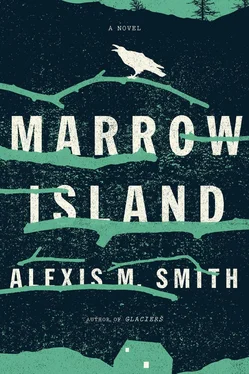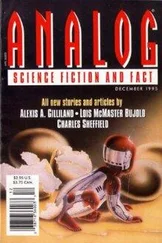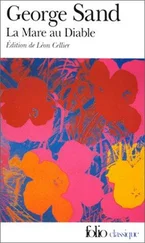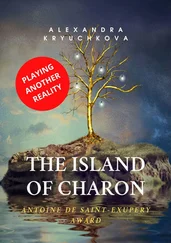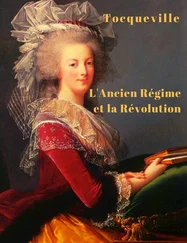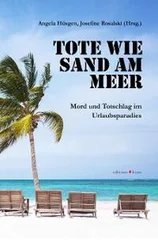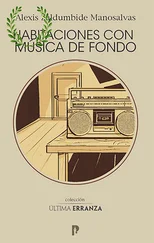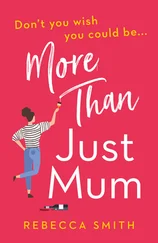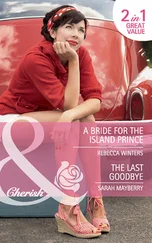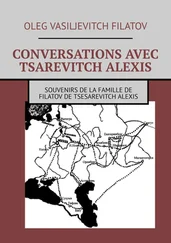“But there aren’t that many people here — how often do you actually get to test these hypotheses?”
She poured the tea through a strainer into a mug for me.
“It’s not an allopathic model; I’ll never be able to write a peer-reviewed paper or anything like that. But I don’t really care.”
She pulled a jar of honey from a shelf and set it in front of me with a spoon.
“Stir a good tablespoon of honey in the tea.”
I did and watched the honey dissolve into the murky liquid. I took a mouthful and felt the heat and scent flow to the back of my throat and bloom up into my sinuses and around my eyes. It wasn’t spicy, exactly, but it had the effect of a hit of horseradish, opening my nasal passages and making my eyes water. I swallowed and felt it cool my entire throat as it went down.
“Jesus Christ.” I started laughing. The sensation passed, and I was left with the honeyed, herbaceous flavor on my tongue.
Elle raised an eyebrow. “Just take sips.”
“What’s in it?”
“The strongest flavors come from the rhizomes of garlic mustard. It’s an invasive species but almost impossible to get rid of, so we found a use for it. We weed it from our fields and the wild spaces — when we can — and it becomes part of our medicinal collection here. There’s also wintergreen, yarrow, skullcap, fireweed… It’s a useful blend.”
“How sick do people actually get here? How often do you need to try a new treatment for rheumatism? Everyone seems relatively young and healthy.” I thought of Sister J. and her cough, but didn’t mention it.
“The average age here is forty-two. So, it’s true, we don’t see a lot of diabetes or rheumatism or things like that. Flesh wounds, insect stings, strains, and sprains. There are almost a third more women here than men. So, migraines — yes. Menstrual irregularities.”
“Birth control?” I offered. “I notice there are couples here but no children.”
She paused and looked thoughtfully at me. “Yes. There’s a long tradition of wise women using herbs for birth control. You’ll want to drink lots of water, too. The tea’s diuretic and diaphoretic.” She gestured to my mug.
She poured off a jar of water for me from an old Tupperware pitcher, like the kind my mom made lemonade in when I was a kid. The water was perfectly clear, catching the light from the window. I took a drink, conscious for the first time that I was drinking well water, that I couldn’t taste anything but water. I held it up. I don’t know what I expected to see floating in it. Lead? Cadmium? Sulfur? Little skulls and crossbones?
Elle saw me.
“It’s as clean as water you get in the city. Probably cleaner.”
“How?”
“Filters, for drinking and cooking water.”
She showed me a lidded bucket with a spigot and a tube in the corner behind the door.
“Six layers: gravel, sand, charcoal; gravel, sand, charcoal. Muslin at the bottom.” She handed me the pitcher and gestured toward the end of the hose, turned the spigot. Water flowed into the pitcher.
“We probably don’t need to use them anymore — it’s been a while since everyone was religious about it. I boil, then filter twice. I don’t want to compromise the treatments.” She nodded at my tea. “It works best when it’s hot.”
I watched her work for a while, as I sipped the tea. Feeling it burn its way down my throat and into my head, my chest. Soon, I was sweating the headache out of me.
Katie came to collect me. The pain in my skull was waning, but my eyes were still sensitive to the light. I borrowed a straw hat from Elle, who told me to rest awhile and handed me a lidded jar of water with a sprig of mint in it. Katie walked me through the medicinal garden and out to the meadow. We made our way over a dirt and grass path through the trees to the central cluster of cottages. They had the look of a prewar summer camp, with a name for every house, painted in bright colors on a sign outside each door. The first colonists named the cottages, and though they must have been struggling in those early years just after the quake, they seemed to have brought a sense of whimsy to Marrow. There was Oysterville and The Pequod, Valhalla and Atlantis, The French Quarter and The Royal Fernery. My cottage, which was set aside for guests — visiting scientists, ecologists, family members — was called the Helix Nebula. There were flower beds and herb gardens around some; others had gone to seed with whatever would grow there — grasses and flowers and young trees, but with birdhouses rising out of them on stilts, or piles of wood alive with mason bees. It was all habitat, Katie said. The only requirement was that a conscious decision had been made by the inhabitants. There were laundry lines slung with sheets and underwear and jeans. Wind chimes answered every breeze.
The vault toilets were not like the typical outhouses of campgrounds. They had built them to look like regular buildings, little shacks and cabins made of salvaged wood and windows and doors. The inner walls were made of a clay composite — a perfectly insulated material that kept them warm in the winter and cool in the summer. Tuck was the one to innovate on the design, a model he perfected after studying at Yestermorrow in Vermont. It became an artistic challenge, improving on the toilets. A couple had retractable sunroofs so that you could shit under the open sky. Each was planted round with native herbs and wildflowers.
“Where did the salvage come from?”
“Some were from cottages here — the ones that collapsed after the earthquake — they took them down piece by piece and reused everything they could. In the time I’ve been here, we’ve had quite a few donations of materials, too. There’s a network of folks around the islands who keep us in mind when they have something taking up space. Like that, over there.” She pointed off through the trees.
“Is that a boat?” I peered through the trees to an open space where I could just make out the blue-and-white hull of a cruiser — probably a fifty-footer — the V-bottom buried in the dirt, like it was sailing through the forest. We were at least a mile from the dock. “That’s incredible. How did you get it up here?”
“Tractor. It took some doing, though.”
“Does someone live there?”
“It’s the lab.” Katie started walking again and I followed.
“That’s a lab? What kind of lab?”
“Soil and water stuff, mostly. It’s where they process the samples.”
“Who’s ‘they’?”
“Tuck and Aaron. Zadie and Jen. The occasional student — they come and go — you know the types. I was one of them once.”
“I’m surprised more of the students don’t stay, honestly.” I was taking in the view, the quaint cottages with the Salish Sea beyond, the gentle swaying of the trees. I looked at her, expecting agreement. But she looked troubled.
“We attract a certain type of person, for sure. Young, interested in environmental issues, social justice, minimalist living. But there’s usually a point, after six months or so… Either it’s something you can give yourself to, or it’s not.”
“But you stayed. Tuck, Jen, Elle—?”
“We were the last newcomers. We had a little cohort — along with Andrew and Tom, who had been at Yestermorrow, in Vermont; Carly and Angela, the sisters from Alaska who run our fishing boat now; Zadie and Luke, who were part of the organic farms exchange. We were all looking for something meaningful that we couldn’t find out there.” She gestured toward the mainland. “We were all in it for the long haul, from the beginning, so with Sister’s blessing, we started making the Colony ours. Most of us never had the chance to make homes for ourselves out there. It wasn’t this trendy thing yet, to be raising goats and bees, and fermenting vegetables or whatever, you know?”
Читать дальше
